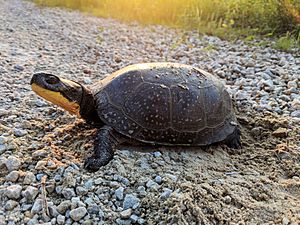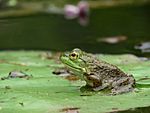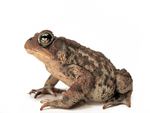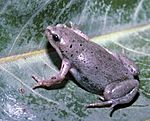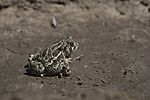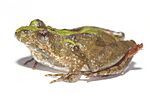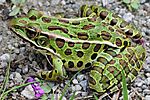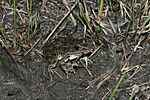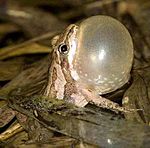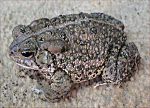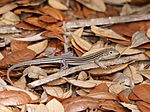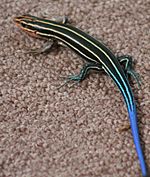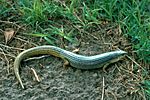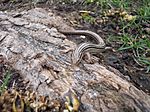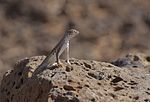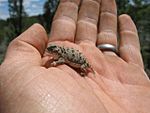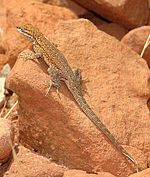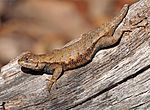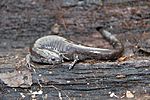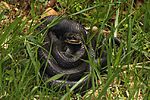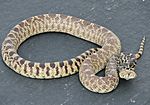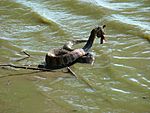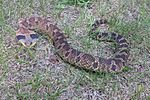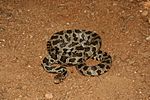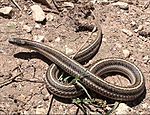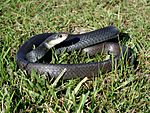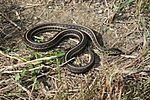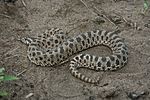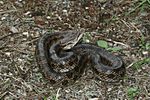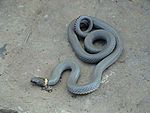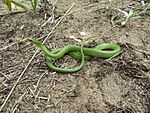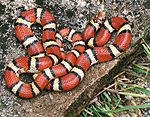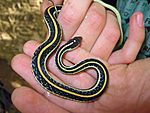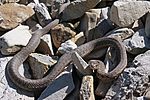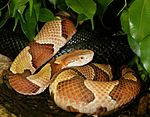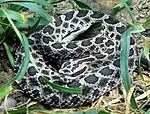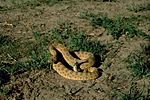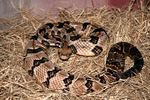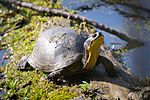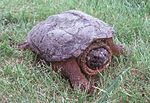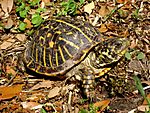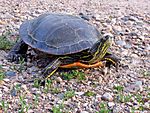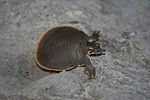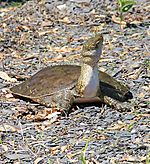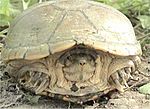List of amphibians and reptiles of Nebraska facts for kids
Did you know that Nebraska is home to many amazing creatures? This article will introduce you to the 13 different kinds of amphibians and 47 types of reptiles that naturally live in Nebraska. These animals are super interesting, and you might even spot some of them if you explore the state's wild places!
Amphibians are animals like frogs, toads, and salamanders. They usually start their lives in water and then move to land as they grow. Reptiles, like snakes, lizards, and turtles, are known for their scales and for laying eggs on land.
Frogs and Toads
Nebraska has 11 different kinds of frogs and toads. These cool creatures are amphibians, meaning they can live both in water and on land. They often have smooth, moist skin and lay their eggs in water.
- American bullfrog
- American toad
- Cope's gray tree frog
- Great Plains narrow-mouthed toad
- Great Plains toad
- Northern cricket frog
- Northern leopard frog
- Plains leopard frog
- Plains spadefoot toad
- Western chorus frog
- Woodhouse's toad
- Native frogs and toads
Lizards
Lizards are fascinating reptiles that live all over Nebraska. There are 10 native species here. They are known for their scales and often have long tails. Some lizards can even drop their tails to escape from predators!
- Six-lined racerunner
- Five-lined skink
- Many-lined skink
- Great Plains skink
- Prairie skink
- Lesser earless lizard
- Slender glass lizard
- Pygmy short-horned lizard
- Sagebrush lizard
- Eastern fence lizard
- Native lizards
Salamanders
Salamanders are amphibians, just like frogs and toads. They have smooth, moist skin and usually live near water. Nebraska is home to two native species of salamanders.
Snakes
Snakes are reptiles that are found in many different habitats across Nebraska. There are 29 native species of snakes in the state. Most of them are harmless, but a few are venomous. It's always best to observe snakes from a safe distance.
Non-venomous Snakes
Most of Nebraska's snakes are not venomous. This means they don't have venom (a type of poison) that can hurt humans. They play an important role in the ecosystem, often helping to control rodent populations.
- Black rat snake
- Bullsnake
- Coachwhip snake
- Common garter snake
- Common water snake
- Dekay's brownsnake
- Eastern hog-nosed snake
- Fox snake
- Glossy snake
- Graham's crayfish snake
- Great Plains ratsnake
- Lined snake
- North American racer
- Plains black-headed snake
- Plains garter snake
- Plains hog-nosed snake
- Prairie kingsnake
- Red-bellied snake
- Ring-necked snake
- Smooth green snake
- Speckled kingsnake
- Western milk snake
- Western ribbon snake
- Western terrestrial garter snake
- Western worm snake
- Native non-venomous snakes
Venomous Snakes
Nebraska has four species of venomous snakes. These snakes have special fangs that can inject venom. If you see one, it's best to give it plenty of space and never try to touch it.
- Native venomous snakes
Turtles
Turtles are ancient reptiles known for their hard shells. These shells protect them from predators. Nebraska is home to eight different species of native turtles. Some live mostly in water, while others prefer land.
- Blanding's turtle
- Common snapping turtle
- False map turtle
- Ornate box turtle
- Painted turtle
- Smooth softshell turtle
- Spiny softshell turtle
- Yellow mud turtle
- Native turtles


